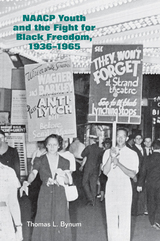
Privileged beyond other members of his race, yet sharing their disadvantages, the young John Mercer Langston stood in an uncertain position in the years before the Civil War. His confrontation with a critical personal question was tempered by a crucial national reality: from what sources could he derive his model of manhood and human dignity? This book explores John Mercer Langston's decisions to work out his destiny through the resources and fortunes of the northern black community.
Although Langston, who died in 1897, was a black Politician, orator, lawyer, intellectual, diplomat, and congressman, he has never before been accorded fullscale biographical treatment. Born free on a Virginia plantation, Langston graduated from Oberlin College in 1849, gained admission to the Ohio bar, and by the age of twenty-five, became the first black American to hold elective office. Still in the years of his political apprenticeship, he promoted black civil rights, helped shape the nascent Republican party, aided in the Oberlin-Wellington Rescue and John Brown's raid, and recruited black soldier for the Union cause. In 1864 he became the first president of the National Equal Rights League.
From an extensive search of primary sources, the authors construct a richly textured picture of the beginnings of Langston's career as a national black leader. More than a biography, the work also incorporates social and political history. Embedded firmly in a study of northern black community life and activism, it reveals the degree to which Langston and his cohorts set the terms of the fight for freedom and citizenship.

This deeply researched book breaks new ground in an important and compelling area of study. Thomas Bynum carefully examines the activism of the NAACP youth and effectively refutes the perception of the NAACP as working strictly through the courts. His research illuminates the many direct-action activities undertaken by the young people of the NAACP — activities that helped precipitate the breakdown of racial discrimination and segregation in America. Beginning with the formal organization of the NAACP youth movement under Juanita Jackson, the author traces the group’s activities from their early anti-lynching demonstrations through their post–World War II “withholding patronage” campaigns to their participation in the sit-in protests of the 1960s. He also explores the evolution of the youth councils and college chapters, including their sometime rocky relationship with the national office, and shows how these groups actually provided a framework for the emergence of youth activism within CORE and SNCC.
The author provides a comprehensive account of the generational struggle for racial equality, capturing the successes, failures, and challenges the NAACP youth groups experienced at the national, state, and local levels. He firmly establishes the vital role they played in the history of the civil rights movement in the United States and in the burgeoning tradition of youth activism in the postwar decades.
READERS
Browse our collection.
PUBLISHERS
See BiblioVault's publisher services.
STUDENT SERVICES
Files for college accessibility offices.
UChicago Accessibility Resources
home | accessibility | search | about | contact us
BiblioVault ® 2001 - 2024
The University of Chicago Press









